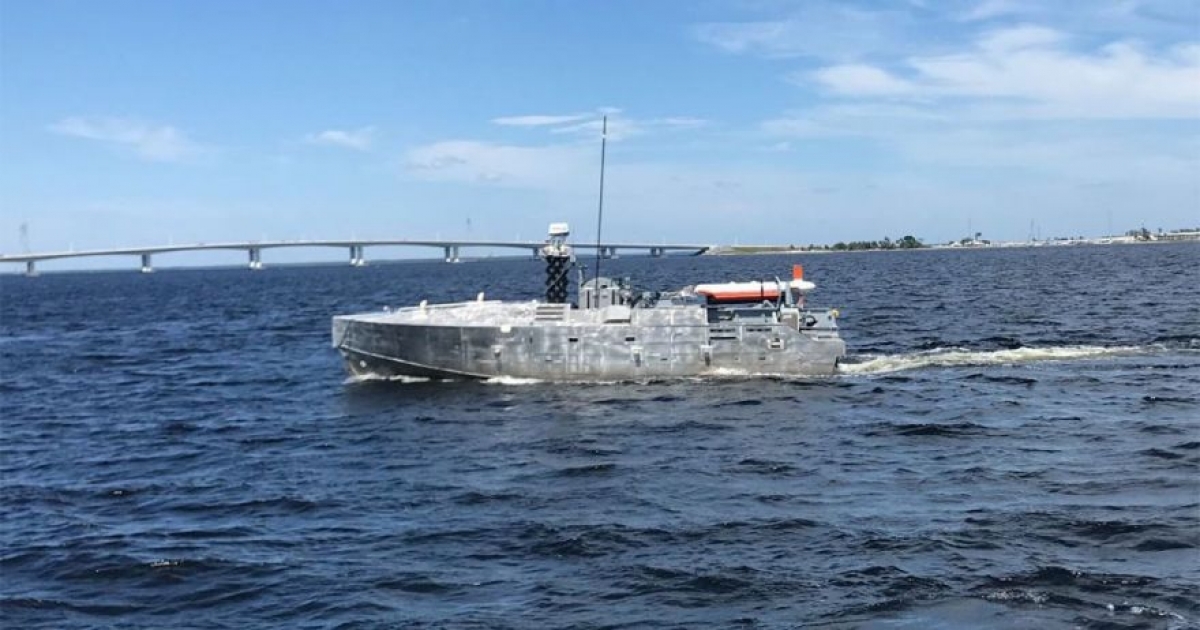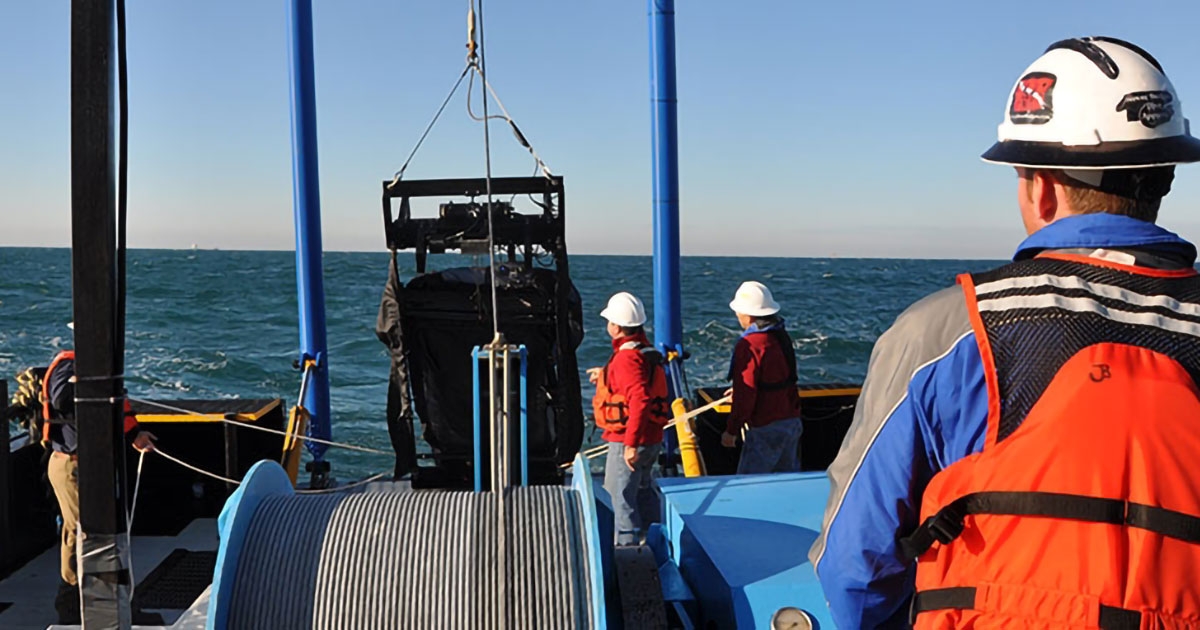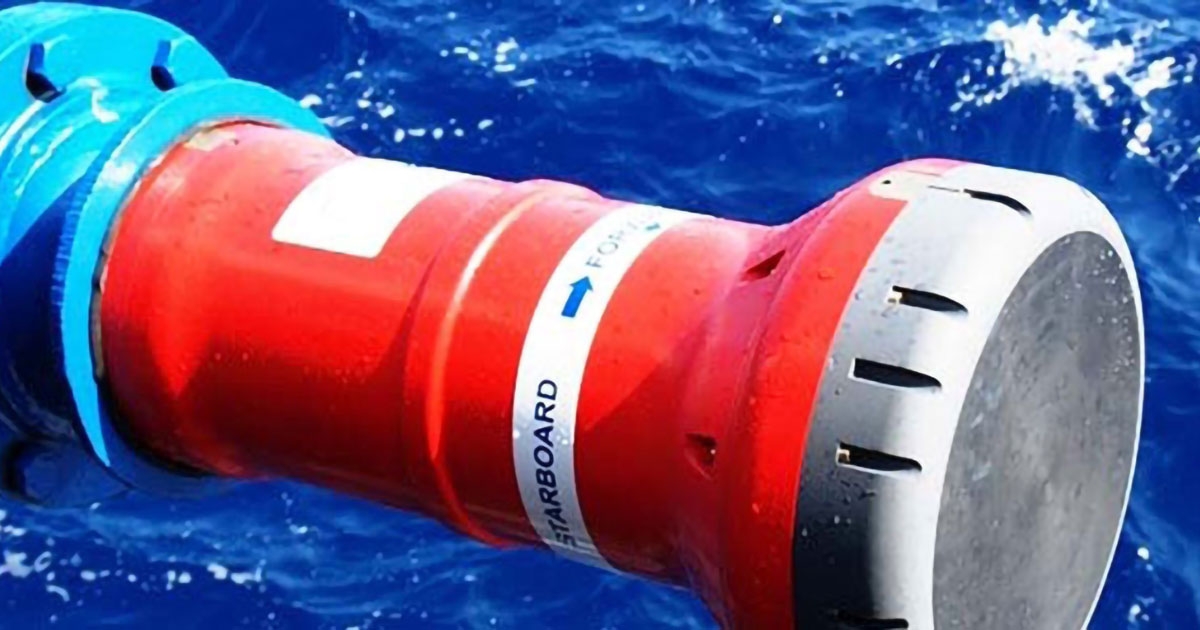This decade, we will rewrite the ocean exploration playbook. Much like the early 1960s—when Trieste made its record-breaking dive to the bottom of the Mariana Trench (1960); Scripps began developing the first Deep Tow System (1961); the USNS Compass Island became the first vessel to operate a multibeam echosounder (1963); and WHOI’s Alvin became a household name (1964)—offshore professionals stand on the precipice of a new, game-changing era. Those pioneering days paved the way for unprecedented advances in ocean technology—including ROV development and deep-sea drilling capabilities—and pivotal scientific discovery. Once again, it is technology that will facilitate our progress, but today we are less concerned with transporting people to new frontiers and more minded to send machines on our behalf.
The prospect of autonomous operations at sea is tantalizing. Whether for commercial, scientific, or defense applications, the underlying objectives are to drive operational efficiency and keep humans out of harm’s way. And while the notion of auto-piloted shipping lanes and crewless warships may seem futuristic, the technology exists. The priority now, though, is to address the challenges of scalability and apply rigorous test and evaluation programs to help define what is possible this decade.
At Okeanus we work with a number of private and government entities to help advance the development of such unmanned systems, in particular Autonomous/Unmanned Surface Vehicles (ASVs/USVs) and Autonomous/Unmanned Underwater Vehicles (AUVs). Recent advances in sensor technology, alongside breakthrough mechanical design, have elevated the role and potential of unmanned systems across a range of sectors, with Artificial Intelligence (AI)—powered by machine learning and the Internet of Things (IoTs)—as the great enabler. In short, we—the offshore industries—are fast approaching the realm of autonomy.
Handling Unmanned Systems
For the team at Okeanus, the promise—and steady adoption—of autonomous systems places increased emphasis on the complex marine engineering needed to design and manufacture the most appropriate handing systems for these ever-smarter marine assets. After all, the ability to safely and efficiently launch sophisticated unmanned systems is just as important as their capacity once deployed.
What we have seen is that small details make a big difference to operational efficiency. Mission endurance, in particular, has become a prime consideration for USVs/UUVs. By virtue of this, weight too becomes a critical factor, and the need to optimize this coefficiency between payload and range places ongoing scrutiny on materials used to design and manufacture the most effective launch and recovery systems (LARS). Today, notwithstanding budgetary restrictions, leading manufacturers of deck handling equipment like Okeanus have focused their energy on novel designs and creative fabrication methods, as well as expanding access to the finest grade marine steel, aluminum, and other innovative composite materials to offer fully customized turnkey solutions for exacting specifications.
Making Autonomous Vehicles More Autonomous
Such precise calculations are particularly pertinent when we consider the autonomous (or at least remotely operated) handling systems for use by an autonomous platform. That is, an automated LARS/winch integrated into the design of an Autonomous Surface Vehicle (ASV) or platform to deploy additional oceanic tools and payloads. In this case, an ASV’s weight must determine the right balance between mission resources (power source, sensor suite, tooling) and vessel requirements in higher sea states, and so places heightened scrutiny on any mechanical components used for its launch and recovery hardware.
A product architecture that prioritizes single-point failure and failsafe modes is also critical, and places increased emphasis on failproof communication networks, not just for control and command, but for the transfer of critical real-time data. Miscommunication and delay are unacceptable for certain autonomous missions, such as Mine Countermeasures (MCM), but when a system does fail—which, even if mitigated, remains a possibility when working in unpredictable and often hazardous conditions—it is imperative that it fails safely.
Such operational concerns are only further accentuated in the age of autonomy. Let’s take, for example, an ASV that is programmed to investigate the seafloor using a towed array to collect data. Traditionally, a towed asset of this nature would be managed topside by an operator on deck who would, should anything go wrong, intervene in the case of a critical failure. Now, let’s consider that the instrumentation gets snagged or somehow damaged on the seafloor when running survey lines; how should the ASV react? Should it have a means of severing the cable? How autonomous can a system be without the ability to make intervention decisions like this? This is a dilemma for Machine Learning (ML) architects to ponder over the coming years.
There are other developments that will also prove central to the integration of autonomous systems this decade, such as advances in battery innovation and technologies designed to harness renewable energy from marine environments—namely wind, solar, and wave power. These, too, will also redefine the parameters of the engineering process.
And this is why industry collaboration is so critical right now. At Okeanus we have seen a pronounced uplift in requests for custom engineering services based on our proven track record for delivering fit-for-purpose, turnkey solutions for the growing interest and deployment of autonomous marine robotics, including ASVs/USVs and AUVs/UUVs. It is our reputation for handling highly complex engineering briefs—from concept through to delivery—between our HQ in Houma LA and our cutting-edge engineering facility in Houston TX that is proven differentiator when working with developers of unmanned vehicles and systems.
One such client is Northrop Grumman, who we partnered with to develop the Okeanus NGC MHU winch for their AQS-24 mine hunting unit. Navies across the world are investing more and more resources into autonomous programs, especially for mine hunting and mine neutralization operations, so it was imperative that our NGC MHU winch incorporated a number of exclusive features designed for very specific asset deployment and recovery. It is this level of collaboration and trust, from concept through to delivery, that has enabled us to foster long-standing relationships with defense innovators like Northrop Grumman to deliver truly fit-for-purpose solutions.
Top Photo: Okeanus MCM-015 winch with AQS-24 mine hunting unit aboard Textron MCM-USV. Photo credits Northrup Grumman and Textron.



